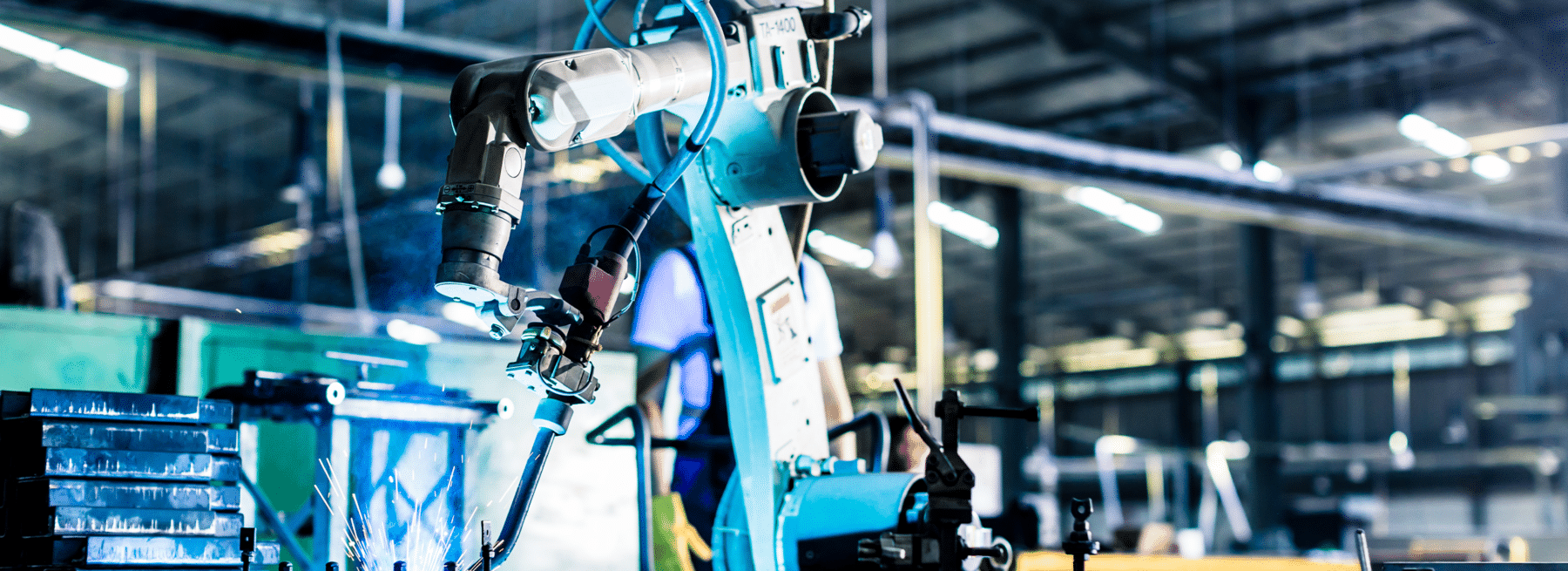Integrating manufacturing systems allows all the apps, tools, and technology to work together seamlessly. This enhances operational efficiencies, especially at a time when there are worker shortage and supply chain challenges. The same applies to integrated security systems in manufacturing.
Any step toward improving operations is a must in manufacturing. That’s because some manufacturing facilities have had to stop production due to the supply chain crisis. The situation has reached an apex as the supply chain issues and side effects have pushed customers to change their shopping and buying habits.
Recall the baby formula shortage. This started because of a recall due to potentially defective products. As soon as the manufacturing facility cleaned up the mess and restarted production, a storm flooded the facility. The company had to undergo an extensive cleanup and testing to verify nothing from the floods infected the facility. The aftereffects of the flood put their products at risk for contamination.
Unfortunately, it was a perfect storm of unusual and unexpected events that led to the supply chain problems that continue after more than two years. It’s perhaps the worst of all time.
Today’s Challenges in Manufacturing
It’s not just production and the brittle supply chain causing problems for manufacturing facilities. They’re contending with a shortage of truck drivers. When they can’t get the product out, it piles up in the warehouse. This makes the cargo a sitting duck for theft. Additionally, if the manufacturing facility produces food and beverage-related products, then it puts the cargo at risk of spoiling.
Another way the supply chain affects manufacturing is in parts replacement. If any part breaks, it may not be so easy or cheap to find a replacement. With inflation driving up the price of many things including materials, the replacement may cost much more than the norm.
Not only does manufacturing assemble products but it also needs to protect these products from theft and other threats. They also need to be protected when moving from the manufacturing facility to storage space. Cargo theft remains a problem. According to TT Club, one-fourth of all cargo theft occurs in facilities. Right behind that is the theft of containers or trailers.
How expensive is cargo theft? The U.S. Cargo Theft Report from Sensitech states the average loss value per incident during the third quarter of 2021 was $337,000. On top of all this, crime is on the rise.
What’s the answer to overcoming the supply chain problems in warehouses and manufacturing facilities while building up security? This is where integrated security enters the picture.
What Is Integrated Security in Manufacturing?
Standard system integration helps the company’s operations stay in sync. In the same way, integrating security delivers multiple benefits including creating multiple layers of security. The more layers you have in security, the harder it is for thieves to break through them. What belongs in a manufacturing integrated security system depends on the facility’s needs.
An integrated security system in manufacturing may have some or all the following:
- Video surveillance
- Remote monitoring
- Video review and analysis
- Access control
- Audio warning speaker
- License plate recognition
Integrated security systems work together. For instance, combining video analytics, human monitoring, video surveillance, and access control makes it possible to match the time stamp from the access control with the video.
Picture how this would work if the systems did not work together. Say the access control system shows an employee entered a room at a specific time. A video analyst would have to search for hours of video recordings to find the exact time and date the employee went into the secure room.
An integrated security system helps increase efficiency by removing the need to search for footage. Security system integration simplifies monitoring and reporting while fortifying security. An integrated security system that uses video analytics can help ease the trained monitoring operator’s load.
Monitoring the cameras for hours and hours is a monotonous task. Video analytics comes with preprogrammed scenarios that it watches for. When it identifies a match, it can alert the monitoring operator.
4 Benefits of Integrated Security in Manufacturing
Here are the top four benefits of integrated security for manufacturing facilities.
1. Helps create more efficient operations
Here’s an example of improved efficiency with a centralized system with 911. Someone calling 911 could need an ambulance, fire department, or police. The caller does not have to dial a different number to reach a specific one. They call 911 and notify then dispatch contacts the right first responders to get involved.
The right integrated security technology offers various benefits. One such technology is remote video monitoring. It can do more than help avert crime, catch criminals, and secure your manufacturing facility.
Manufacturing facilities use video surveillance with remote monitoring for the following:
- Increasing operational efficiencies by finding and fixing bottlenecks.
- Identifying safety hazards and reporting them before something happens.
- Reducing liability and fraud with video evidence of what happened.
- Minimizing damage with early flood and leak detection.
An integrated and centralized security system helps streamline processes, workflows, and reporting. If you have a question about any of it, you have one point of contact. If you need to find footage with a license plate, you contact the same source. It saves a lot of time for everyone involved
If an operating monitor spots a problem, they know how to handle the situation. No one will be confused about the process of determining the contact point.
2. Helps deters theft and fraud
Manufacturing facilities deal with cargo theft both in the facility and during transport. They also need to take steps to prevent internal threats and theft. That’s because workers know the security system’s weaknesses and workarounds.
A Kroll global fraud and risk report reveals that more than 80% of executives have had at least one instance of fraud. The guilty party in more than half of fraud cases turns out to be employees, former employees, and third parties.
A Forbes story states the U.S. Chamber of Commerce has discovered that 75% of employees have stolen from their company at least once. Moreover, one-third of business failures have been attributed to employee fraud and abuse.
Remote video surveillance helps solve these challenges. If someone enters the facility without permission, a trained operator watching the cameras can call law enforcement while tracking the suspect. These operators in a remote location. They can watch for suspicious employee behavior. They’re not likely to work with an employee to steal from the facility.
3. Helps deter suspicious activity faster
A manufacturing integrated security system that contains surveillance cameras, video analytics, trained monitoring operators, and access control systems is an effective way to help prevent cargo theft, vandalism, and damage. Just having cameras could be enough to deter some suspects.
However, as criminals become more violent, they may not be easily deterred. They may think the cameras will never identify them. That’s why it’s critical to work with a security vendor who can ensure you have the right cameras for your needs.
Security camera technology exists that can make out faces, license plates, and other important information to help catch the perpetrators. But not every security company uses this technology.
Unlike traditional security systems, remote video surveillance is proactive. The real-time monitoring process involves trained operators watching for suspicious activity and taking the appropriate action. It helps prevent criminal activity and potential damage.
The way it works is that trained operating monitors watch your cameras in an offsite location. They can view the entire property, far more than a security guard can, including areas guards can’t patrol. When a potential problem comes up, the operator can issue a warning on a speaker and follow that with a call to the police.
An integrated system combining video analytics and access control is proactive because video analytics watches for certain scenarios. When one occurs, such as unexpected after-hours access, it raises flags and alerts the human. The monitoring operator can review the activity and act immediately.
This proactive security technology helps mitigate risks and damage while minimizing business disruption. An integrated security system lets management see any part of the facility, even multiple properties in real-time.
Surveillance cameras without monitoring are a reactive solution. By the time anyone notices something happened, the intruder could be long gone. Real-time monitoring can help catch suspicious activities before or as soon as they happen. In doing so, the damage can be avoided or minimal.
4. Helps deliver a fast return on investment
Theft — especially now with inflation — can cost more than the items stolen and the actual damage incurred. If thieves leave destruction in their wake, it could potentially cause the facility to temporarily close for repairs and halt production. This isn’t good for business.
As part of an integrated security system, remote video surveillance can store recordings for later retrieval and analysis. The recordings are useful in supplying evidence to protect the manufacturing facility from fraud, injury, and liability claims.
Security cameras can give you the proof you need to demonstrate you’ve taken the needed precautions to create a safe and secure environment. It may help lower your premiums.
An integrated security system can be easier to maintain and keep updated. Because everything is combined, you’ll need fewer people to manage it and monitor the cameras. Thus, it can save on time and costs. Thanks to advancements in manufacturing security technology, remote video surveillance and access control are cost-effective solutions that could yield a fast return on security investment.
An integrated security solution in manufacturing that includes video surveillance, and an access control system can do more than deter crime. Worker safety is one of manufacturing’s highest priorities. Video cameras with monitoring can help catch potential hazards and problems before anyone gets injured. The monitoring operator can contact someone at the facility about the problem.
Stealth Monitoring security experts can give you the support you need to review your facility to create a right-sized security solution. In choosing to work with us, you’ll have access to security professionals who have experience in securing manufacturing facilities. To learn about video surveillance, access control systems, and security solutions that meet your needs, contact us.

